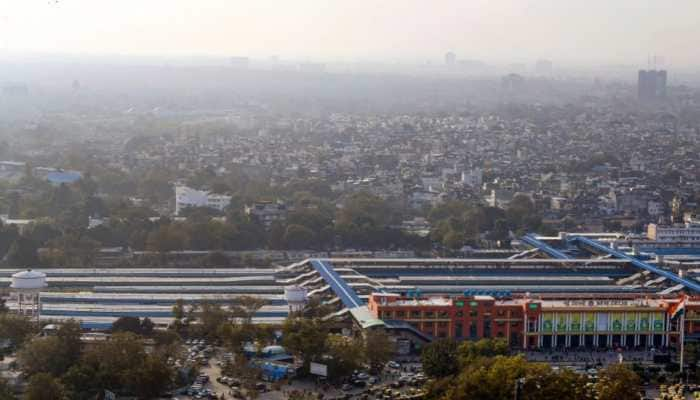Banks enter 2016 with $60 billion red ink on books
As a New Year begins, it's not a clean slate for the banks with balance sheets full of red ink due to huge bad loans worth about USD 60 billion and a serious clean-up job is a must in 2016 with the RBI having set a deadline.
Trending Photos
)
Mumbai: As a New Year begins, it's not a clean slate for the banks with balance sheets full of red ink due to huge bad loans worth about USD 60 billion and a serious clean-up job is a must in 2016 with the RBI having set a deadline.
At the same time, the existing public and private sector banks would also have to prove their competitiveness in the wake of two entirely new breeds of banks joining the fray in the form of payments and small finance banks this year.
At the end of the day, it will be the customers and the quality of services offered to them that will matter and the bankers are almost unanimous that the technology is going to remain the key plank for the banking sector going ahead.
ICICI Bank's CEO Chanda Kochhar said the financial sector will see continued innovations based on technology that will deliver enhanced convenience and value to customers.
But it is the technology that the new entrants with payments bank license are looking to tap for making a mark in the USD 1.5 trillion banking industry and to challenge the traditional banking models.
State-run SBI's chief Arundhati Bhattacharya, known for being vocal with her views, said the new 'agile' players may have an edge as they are not bound by industry-level wage agreements which can lead to "a dog-eat-dog's world".
"Existing universal banks stand to face challenges given the fact that these banks will be coming in without any risk, that they will be coming in with an agile system and delivery models and that they have not been held hostage by industry-level agreements and wage limits," she said.
Another key issue for the banks in the New Year would be RBI's new diktat for following a uniform method for setting their base lending rates, which follows Governor Raghuram Rajan repeatedly chiding the bankers to ensure passing on full benefits of the central bank's repo rate cuts to customers.
Banks have so far been known to have been slow in passing on the rate cut benefits, although the hikes in RBI's policy rate get passed on immediately.
A sense of unease is there among the bankers on this, but not many of them have spoken out publicly on this, again sans the SBI chief, who said that RBI's repo rate was a "blunt instrument" and not very relevant for lenders to adjust their rates.
While such run-ins are expected to continue between the banks and the central bank this year, Rajan has shown no signs of relenting on the deadline of March 2017 given to the banks to clean up their balance sheets and banks are most likely to
be supportive of his measures in the fight against bad loans, which is estimated to have ballooned to Rs 4 lakh crore or about USD 60 billion.
In the recently released Financial Stability Report, RBI said as of September quarter, led by state-run banks, gross NPAs rose to 5.1 percent from 4.6 percent in March 2015, while net NPAs increased to 2.8 percent from 2.5 percent during the same period taking the total stressed assets to 11.1 percent.
"...one of the possible inferences (for rising NPAs) could be that banks extended disproportionately high levels of credit to corporate entities/promoters who had much less 'skin in the game' during the boom period," it said.
NPAs may rise further in the initial months of 2016 as the RBI has reportedly identified top 150 defaulters and asked banks to make additional provisions for those loans.
In this fight, one big achievement last year for banks was that they managed to declare many defaulters like Kingfisher Airlines, Winsome Diamonds, Zoom Developers among others, as willful defaulters.
With rising NPAs, banks' profitability continues to take a hit with the state-run banks posting a 19 percent dip in profits for the second quarter of the current fiscal, although private sector banks managed to log in a 15 percent growth.
The FSR has also warned that default by three top corporates could shave off 13 percent of the bank capital. Default by two of the highly leveraged corporates can result in capital losses of 9 percent and 13 percent losses can occur if the top three borrowers default, warns the report.
"Corporate sector vulnerabilities and the impact of their weak balance sheets on the financial system need closer monitoring," Governor Rajan said in the report.
The report also notes that contribution of large borrowers to total bad loans and restructured accounts, which crossed 11.1 percent of the system, is a whopping 87 percent as of the September quarter, up from 78.2 percent a year ago.
"Asset quality and capital are the two important factors for the banking sector and some new beginnings have been made on those fronts. However, the pace of reforms is still slow," Icra senior vice-president Vibha Batra said.
Worried over the rising tide of bad loans, Rajan in the December policy announcement set a deadline to state-run banks to clean up their bloated balance-sheets by FY17.
The government on the other hand has been taking a number of steps to revive the health of public sector lenders. At the same time, Prime Minister Narendra Modi has made it clear that the 'lazy banking' must come to an end, as he asked bankers to run the banks professionally without any outside influence.
The RBI has also given the banks more tools to speed up recovery from stressed assets in the form of strategic debt restructuring, which allows banks to convert a part their debt into equity of defaulting firms.
Stay informed on all the latest news, real-time breaking news updates, and follow all the important headlines in india news and world News on Zee News.
Live Tv







)
)
)
)
)
)
)
)
)
)
